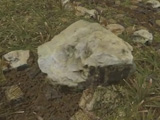|
|
TODAY.AZ / Weird / Interesting
'Unlimited Detail' graphics tech surfaces again with tantalizing new demo - VIDEO
03 August 2011 [11:56] - TODAY.AZ
 Using point-cloud construction rather than polygons, the software promises digital environments that are 100,000 times more detailed than the current state of the art.
Using point-cloud construction rather than polygons, the software promises digital environments that are 100,000 times more detailed than the current state of the art.A little more than a year ago, we wrote about an Australian hobbyist named Bruce Dell who was claiming--with video evidence to back it up--that he’d created a new graphics technology that could deliver unlimited power. That is, rather than working with a limited number of polygon shapes (restricted, of course, by computing power), a graphic environment could be built from an infinite number of 3-D virtual atoms, much like the physical world. It was a cool idea. Then Dell and his Unlimited Detail graphics system disappeared.
Now Dell is back with a company called Euclideon and a new video describing the progress he’s made on his software over the last year. And again, it looks pretty impressive if completely unverifiable.
The idea, on its face, doesn’t sound impossible. Basically, Unlimited Detail eschews the usual polygon shape construction for a point-cloud construction for his virtual environments. But an infinite number of 3-D atoms would require an infinite amount of computing power to render. Even a small number of detailed point-cloud objects would require tons of computational wherewithal.
Unlimited Detail circumvents the computing power problem, Dell says, by acting like a search engine that figures out, in real time, which points need to be rendered to create a certain view from a certain perspective. So only the “atoms” that are being viewed in a given frame from a certain perspective are actually rendered at any given time. The rest go un-rendered in the background. Less rendering means less computing power consumed.
In the video below, Dell describes in perfect exhilarated-Aussie just how awesome this technology could make our video game worlds and other virtual environments. Unlimited Detail can now pack one million atoms into a single virtual cubic inch, allowing for unprecedented detail. And it could make such environments less virtual, allowing game designers to “scan” in objects from the real world and present them as they look naturally, making video game worlds a kind of hybrid reality with some parts real and some parts engineered by artists.
This is all assuming that Unlimited Detail really works. Dell and company are still keeping a lot of secrets and have said they’ll probably go quiet again after this one-year progress report so they can finish up their work. So, once again, you’ll have to judge for yourself.
/Popular Science/
Watch video:
URL: http://www.today.az/news/interesting/91957.html
 Print version
Print version
Views: 1913
Connect with us. Get latest news and updates.
See Also
- 19 February 2025 [22:20]
Visa and Mastercard can return to Russia, but with restrictions - 05 February 2025 [19:41]
Japan plans to negotiate with Trump to increase LNG imports from United States - 23 January 2025 [23:20]
Dubai once again named cleanest city in the world - 06 December 2024 [22:20]
Are scented candles harmful to health? - 23 November 2024 [14:11]
Magnitude 4.5 earthquake hits Azerbaijan's Lachin - 20 November 2024 [23:30]
Launch vehicle with prototype of Starship made its sixth test flight - 27 October 2024 [09:00]
Fuel prices expected to rise in Sweden - 24 October 2024 [19:14]
Turkiye strikes terror targets in Iraq and Syria - 23 October 2024 [23:46]
Kazakhstan supplied almost entire volume of oil planned for 2024 to Germany in 9 months - 23 October 2024 [22:17]
Taiwan reported passage of Chinese Navy aircraft carrier near island
Most Popular
 What von der Leyen doesn't know about. Or doesn't want to know
What von der Leyen doesn't know about. Or doesn't want to know
 Turkish auto sector shifts gears for green transformation
Turkish auto sector shifts gears for green transformation
 Bayramov: Direct talks yield better results than mediated dialogue
Bayramov: Direct talks yield better results than mediated dialogue
 Japan grants $3 billion loan to Ukraine using profits from frozen Russian assets
Japan grants $3 billion loan to Ukraine using profits from frozen Russian assets
 Baku spends over 1 billion manats on education in Q1
Baku spends over 1 billion manats on education in Q1
 America’s tariff strategy risks fragmenting global economy
America’s tariff strategy risks fragmenting global economy
 At least 148 dead after boat accident on DR Congo river
At least 148 dead after boat accident on DR Congo river
